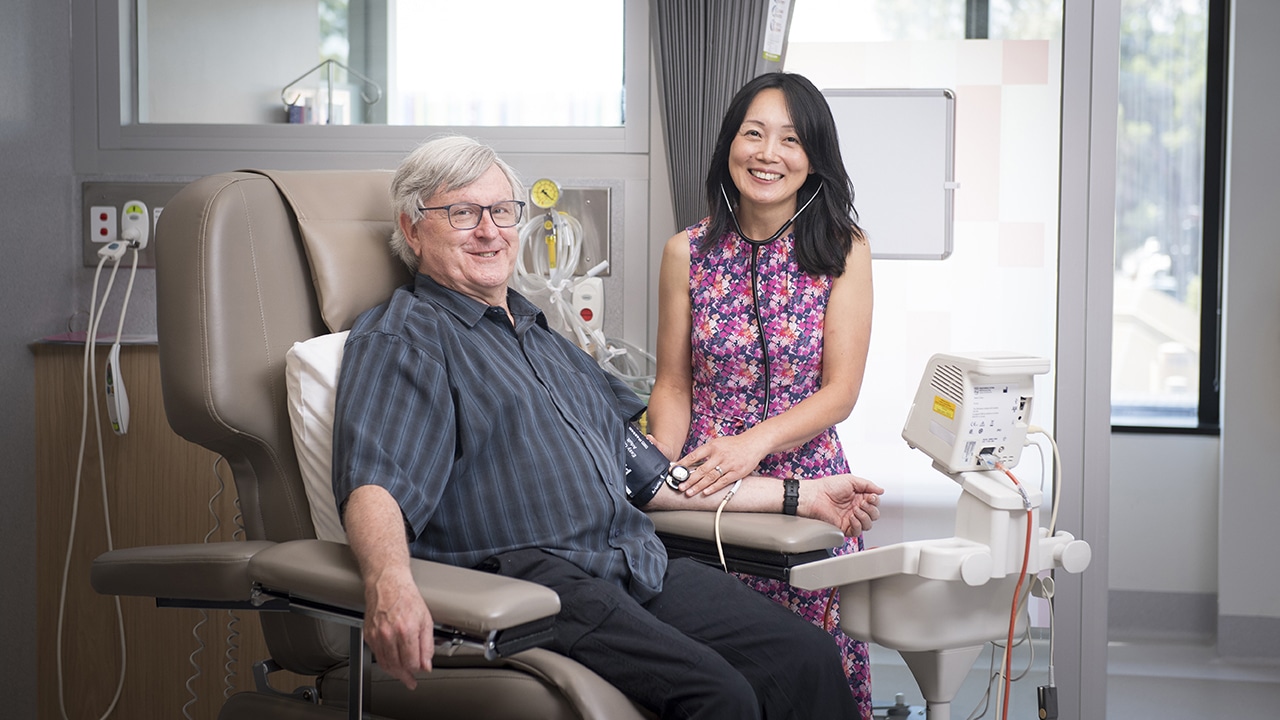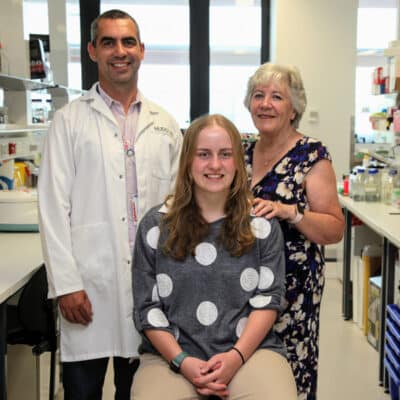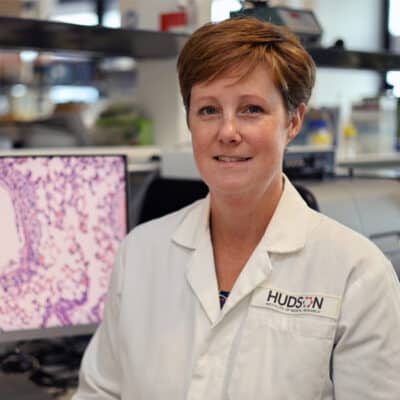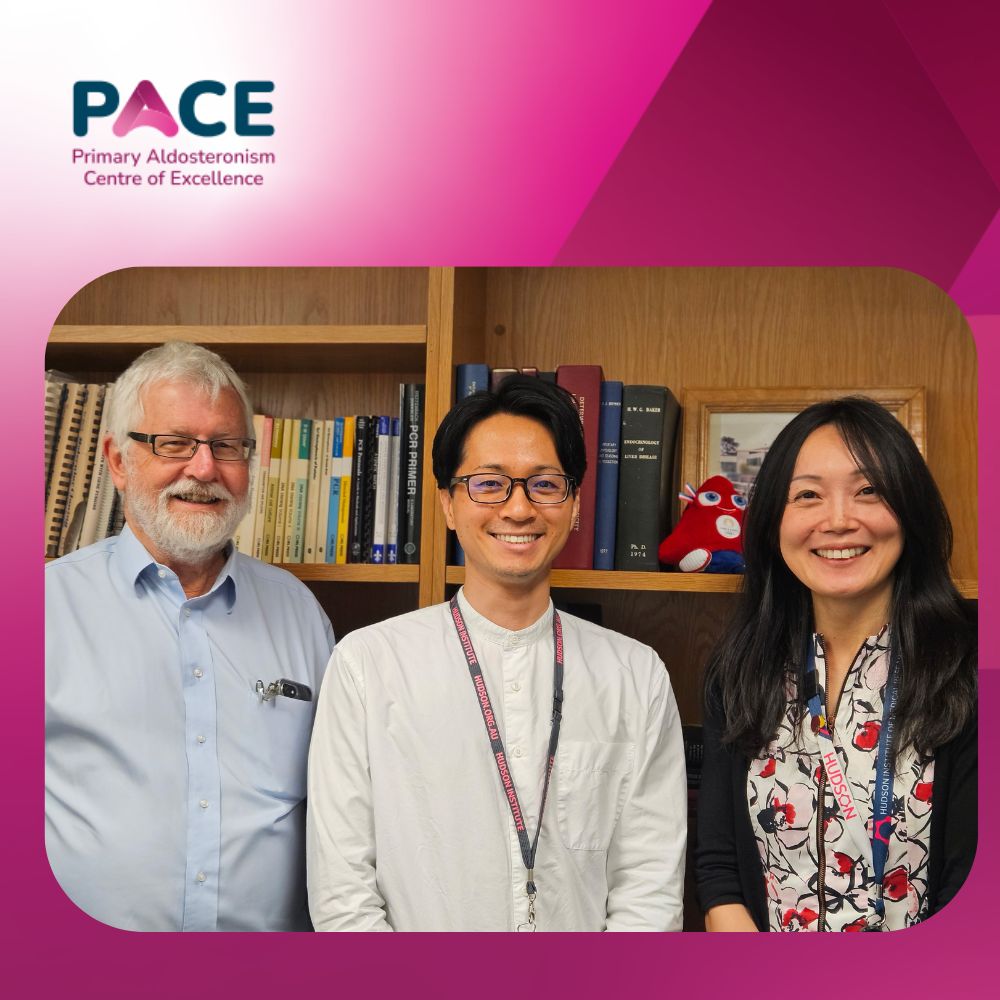Tackling hypertension at the source
By Rob Clancy, staff writer. Reviewed by Associate Professor Jun Yang

Associate Professor Jun Yang ended up tackling hypertension almost by accident. It was a simple suggestion that led her to begin studying primary aldosteronism (PA), but when she discovered both her parents had the condition, she know she was onto something.
Endocrine hypertension facts
- Endocrine hypertension refers to high blood pressure caused by the abnormal production of hormones
- The most common form of endocrine hypertension is primary aldosteronism (PA), also known as Conn syndrome.
- Primary aldosteronism affects five to 10 per cent of those with hypertension but often goes undiagnosed.
- Endocrine hypertension is treatable with specific medication or even curable with surgery, depending on the exact cause.
That initial prompt from her supervisor, two years into her PhD, to develop a hospital protocol for PA led her to big things.
“Once I started reading about the topic, I couldn’t stop,” A/Prof Yang says. “There seemed to be so much hypertension (high blood pressure) out there, either not diagnosed or diagnosed too late.”
The more she investigated, the more she found patients with hypertension that would not respond to the usual treatments, and frequently the cause was PA.
“As a result, we were seeing patients with totally preventable cardiovascular disease, caused by decades of poorly controlled hypertension and organ damage.”
Tackling hypertension for 600,000 Australians
Further research established that of the one-in-three Australian adults with hypertension, at least 10 per cent have PA; equating to approximately 600,000 people in Australia.
“Funding is needed for rigorous research that has the power to change clinical practice guidelines.”– A/Prof Jun Yang
“In people with PA the adrenal glands produce too much aldosterone, a salt retaining hormone,” A/Prof Yang explains. “As well as hypertension, PA increases the risk of stroke, heart attack and kidney disease, but it is rarely diagnosed. Yet, if it is accurately diagnosed, PA can be cured or effectively treated using a simple medication.”
Now, as Head of the Endocrine Hypertension Research Group at Hudson Institute, alongside PhD candidates Dr Renata Libianto and Dr Elisabeth Ng, A/Prof Yang is working with GPs and hospitals to improve this situation on two fronts.
Firstly, to help GPs diagnose PA in patients with hypertension, and secondly with hospitals to ensure they are equipped to deal with the expected influx of PA cases coming their way.
She recently received a Federal Government-funded MRFF clinical trials activity grant of $2,290,000 over four years for a trial running in three states, aiming to increase diagnosis of PA.
“Hypertension is a very common problem in primary care, hence GPs play a crucial role in the timely diagnosis of primary aldosteronism,” she says.
“If they can detect PA early in the patient’s hypertension journey, then targeted treatment – and potential surgical cure – can be offered to treat the root of the problem.”

Hudson News Winter 2023
In this article
About Hudson Institute
Hudson Institute’ s research programs deliver in three areas of medical need – inflammation, cancer, women’s and newborn health. More
Hudson News
Get the inside view on discoveries and patient stories
“Thank you Hudson Institute researchers. Your work brings such hope to all women with ovarian cancer knowing that potentially women in the future won't have to go through what we have!”











